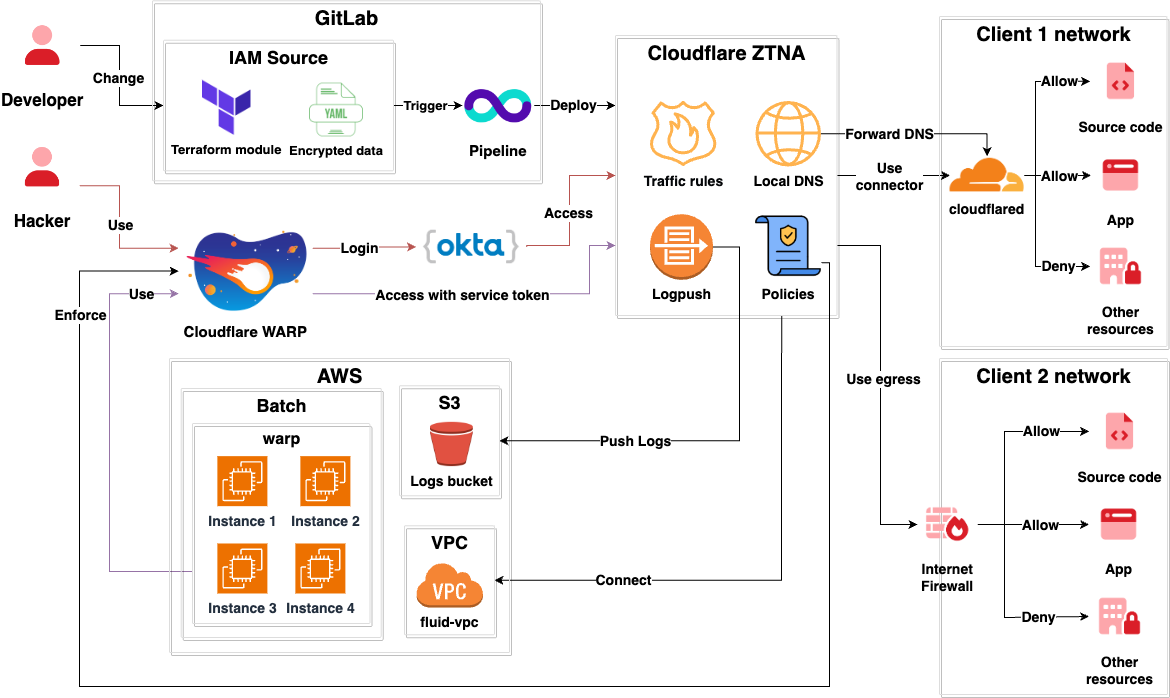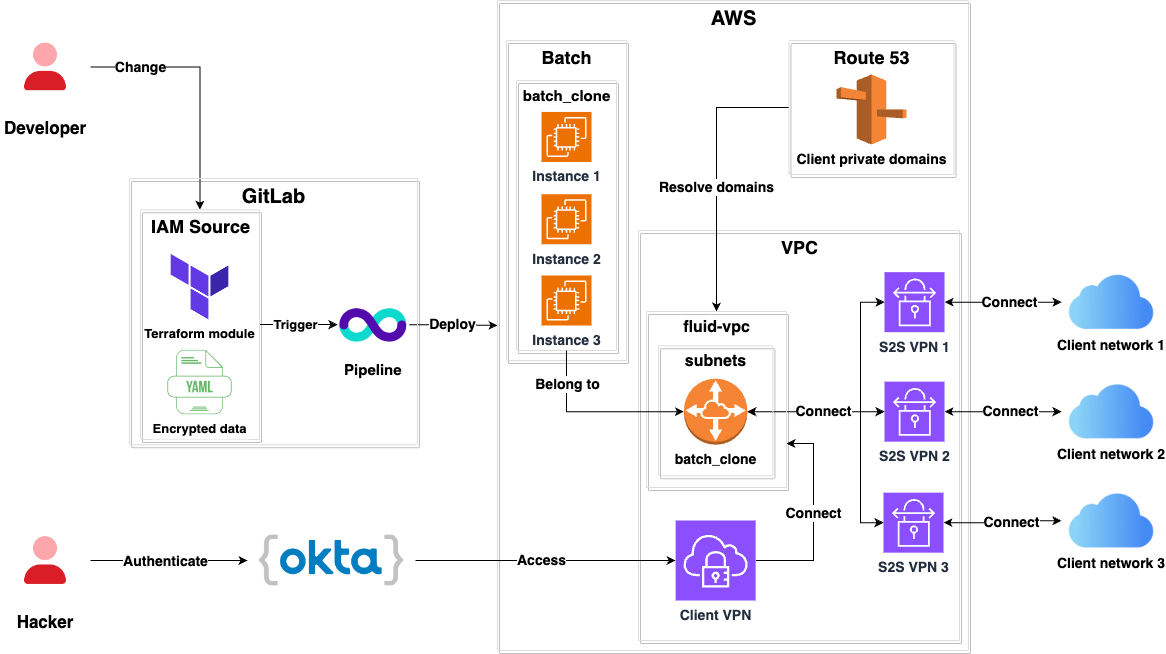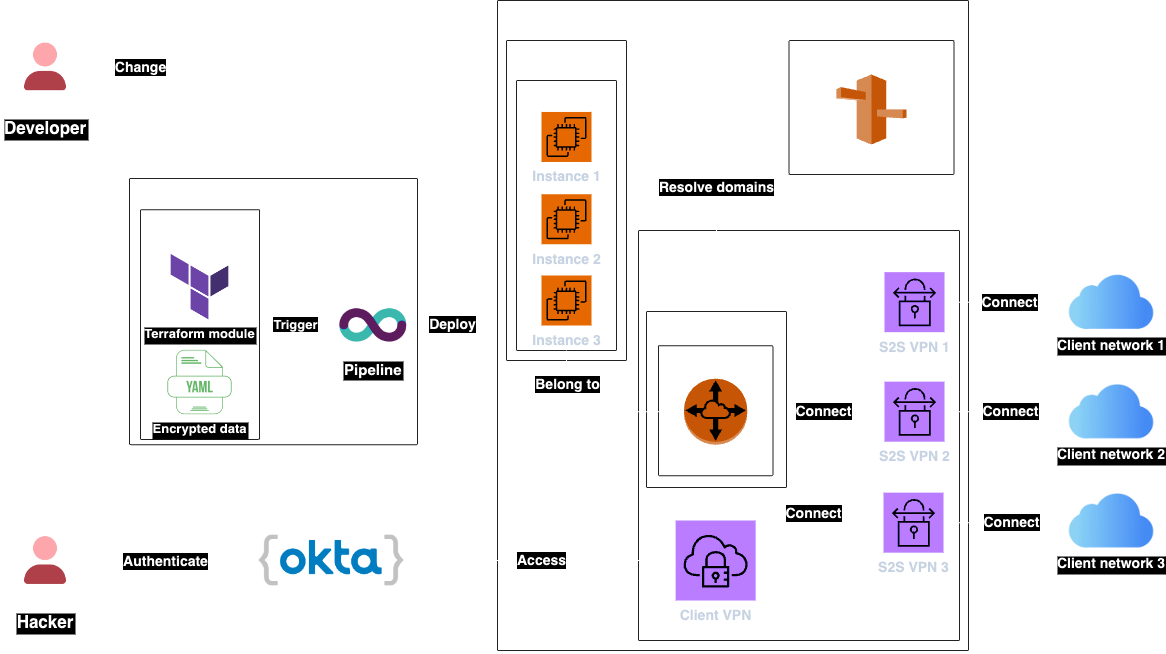Virtual Private Network (VPN)
The VPN is a common component that is is responsible of establishing secure connections between Fluid Attacks' VPC and the private network of some of Fluid Attacks' clients.
Its main purpose is to provide a method to reach resources that are not accessible via Internet and are essential for Fluid Attacks' service.
These resources are typically source code repositories and pre-production application environments.
Public Oath
- Fluid Attacks will look for private-connection solutions that balance security, usability and standardization in order to provide a service that is as seamless and scalable as possible.
- An authentication architecture that uses role-based access control, strong passwords and multiple factors will be used for controlling who accesses client networks.
- When possible, detailed logs of network activity will be provided to clients via Integrates.
Architecture
- The
vpncomponent is managed as code using Terraform. - Sensitive information for establishing secure connections with client networks is stored in encrypted YAML files using Mozilla SOPS.
- It implements two different architectures, Cloudflare and AWS.
Cloudflare


- This architecture uses Fluid Attacks' Cloudflare network in order to connect Fluid Attacks and its clients.
- Fluid Attacks Hackers use Cloudflare WARP to connect to the Cloudflare network.
- Authentication to Cloudflare WARP for hackers is done via Okta.
- A AWS Batch
compute environment called
warpinitializes machines with Cloudflare WARP installed so they can reach the networks of clients. - Authentication to Cloudflare WARP for AWS Batch is done using a service token.
- Posture policies like having the latest OS version, firewall turned on, and encrypted hard drive, are enforced over all devices connected to WARP.
- The AWS VPC is accessible via WARP for developers to perform debugging.
- Navigation logs for traffic between Fluid Attacks and the networks of clients are pushed to a s3 bucket using Cloudflare Logpush.
- Minimum privilege traffic rules exist so only users with permissions have access to networks of clients.
Networks of clients can be reached in two different ways.
Connector
- The client installs
cloudflaredin a machine belonging to the network they want to share with Fluid Attacks. cloudflaredcommunicates with Fluid Attacks' Cloudflare network.- The
cloudflaredinstance becomes a pivot machine that allows Fluid Attacks to reach the client network. - As the client is the owner
of the
cloudflaredinstance running in their network, they can set up minimum-privilege rules for it to only reach those resources that should be accessible. - Internal DNS requests are forwarded to the client's DNS servers.
Egress
- Fluid Attacks provides a pair
of reserved IPv4 public addresses
that are used exclusively
for reaching the client's network.
These are called
egress ips. - The client exposes the
resources that need to be accessed
to the Internet
and only allows traffic from
Fluid Attacks
egress ips.
AWS


- This architecture is deprecated and will be removed in the future.
- It uses AWS Site-to-Site VPN Connections.
- A subnet called
batch_cloneis routed through all the Site-to-Site VPNs so it can reach the networks of clients. - It uses Route53 to resolve domains within the networks of clients.
- Fluid Attacks Hackers can access hosts in the networks of clients by using the AWS Client VPN.
- Authentication to the AWS Client VPN Endpoint is done via Okta.
Contributing
Please read the contributing page first.